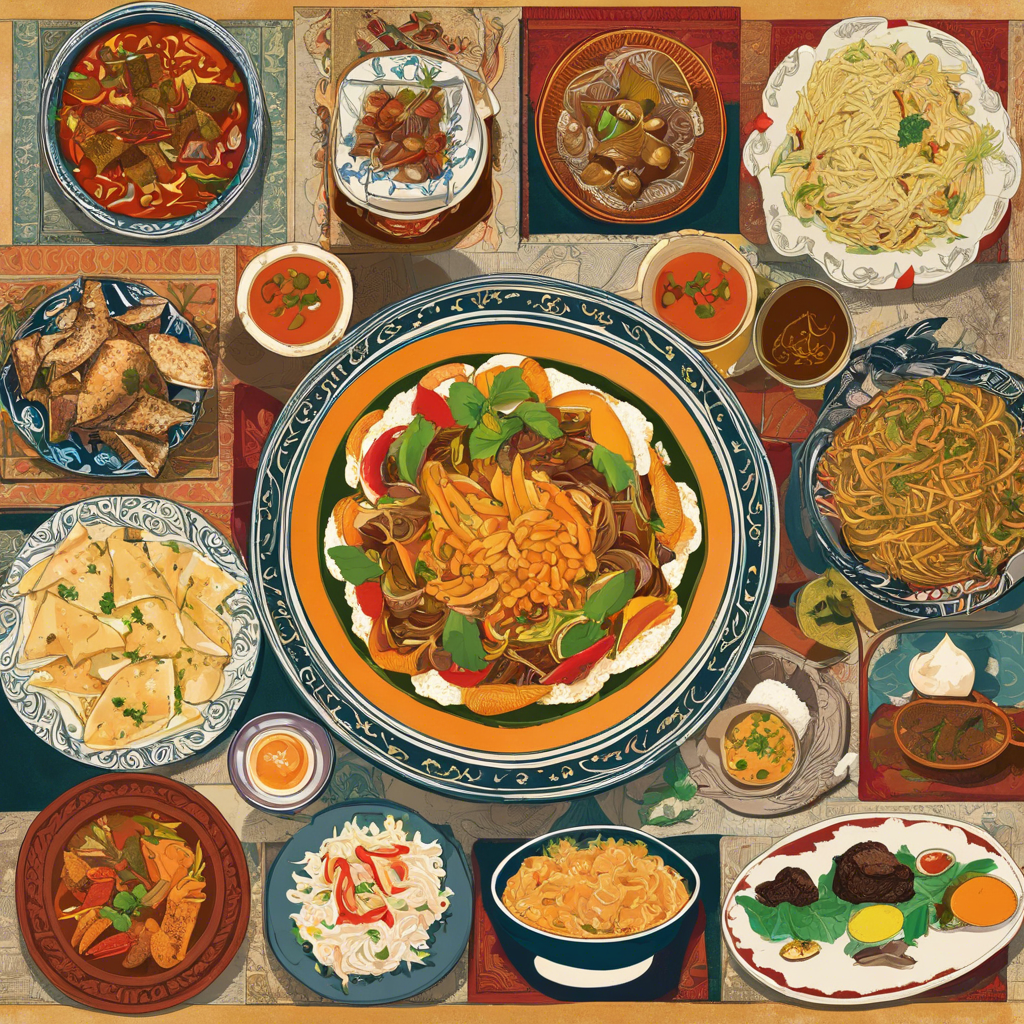Traditional Dishes from Around the World
Food has always been a central part of cultures worldwide, reflecting the history, traditions, and flavors of each region. From hearty stews to delicate pastries, traditional dishes offer a glimpse into the culinary heritage of different countries. Let’s take a culinary journey around the world and explore some of the most iconic traditional dishes that have stood the test of time.
In Italy, pasta is a beloved staple that comes in countless shapes and forms, each region boasting its own specialties. From the hearty Bolognese in the north to the seafood-infused dishes of the south, Italian pasta dishes are a true embodiment of comfort and flavor. One cannot talk about traditional Italian cuisine without mentioning pizza, a dish that has become a global favorite with its crispy crust, gooey cheese, and endless topping possibilities.
Moving across the Atlantic to Mexico, we encounter the vibrant and spicy flavors of Mexican cuisine. Tacos, enchiladas, and tamales are just a few examples of the diverse and flavorful dishes that make up Mexican culinary traditions. The use of fresh ingredients such as chilies, tomatoes, and avocados adds a burst of color and taste to every bite, making Mexican cuisine a fiesta for the senses.
In Japan, sushi stands out as a quintessential traditional dish that has captured the hearts of food lovers worldwide. The art of preparing sushi requires skill, precision, and an eye for detail, resulting in beautifully crafted pieces of raw fish atop seasoned rice. Beyond sushi, Japanese cuisine offers a wide array of dishes such as ramen, tempura, and bento boxes, each showcasing the delicate balance of flavors and textures that define Japanese cooking.
Traveling to the Middle East, we find a rich tapestry of flavors in dishes like hummus, falafel, and kebabs. These dishes highlight the use of spices such as cumin, coriander, and sumac, creating a medley of aromas and tastes that are both comforting and exotic. Whether enjoyed with warm pita bread or fragrant rice, Middle Eastern cuisine is a celebration of hospitality and generosity, inviting diners to savor every bite.
India’s culinary landscape is as diverse as its people, with each region offering its own distinctive flavors and specialties. From the fiery curries of the south to the creamy kormas of the north, Indian cuisine is a symphony of spices and ingredients that come together to create unforgettable dishes. Vegetarian options like dal and paneer dishes showcase the richness and complexity of Indian cooking, while street food delights such as chaat and samosas offer a taste of everyday life in India.
Crossing the Mediterranean to Greece, we discover a cuisine that is both simple and elegant, emphasizing fresh ingredients and bold flavors. Dishes like moussaka, souvlaki, and tzatziki showcase the use of olive oil, herbs, and citrus to create dishes that are both comforting and refreshing. The Mediterranean diet, with its emphasis on fresh vegetables, seafood, and olive oil, has gained recognition for its health benefits and delicious taste, making Greek cuisine a favorite around the world.
Finally, in Brazil, we encounter a vibrant and colorful culinary tradition that reflects the country’s diverse influences and rich history. Feijoada, a hearty stew of beans and pork, is a national dish that symbolizes the fusion of Portuguese, African, and indigenous flavors. Brazilian barbecue, known as churrasco, is a carnivore’s delight, featuring an array of grilled meats served with farofa and chimichurri sauce. The tropical fruits of Brazil, such as acai, guava, and passion fruit, add a refreshing touch to desserts and beverages, showcasing the bounty of the Brazilian landscape.
In conclusion, traditional dishes from around the world offer a window into the cultural richness and diversity of different countries. Whether it’s the comforting flavors of Italian pasta, the spicy kick of Mexican cuisine, or the delicate tastes of Japanese sushi, traditional dishes have the power to transport us to far-off lands and connect us through the universal language of food. Next time you sit down to enjoy a traditional meal, remember that you are not just tasting flavors but experiencing a piece of history and tradition passed down through generations.
